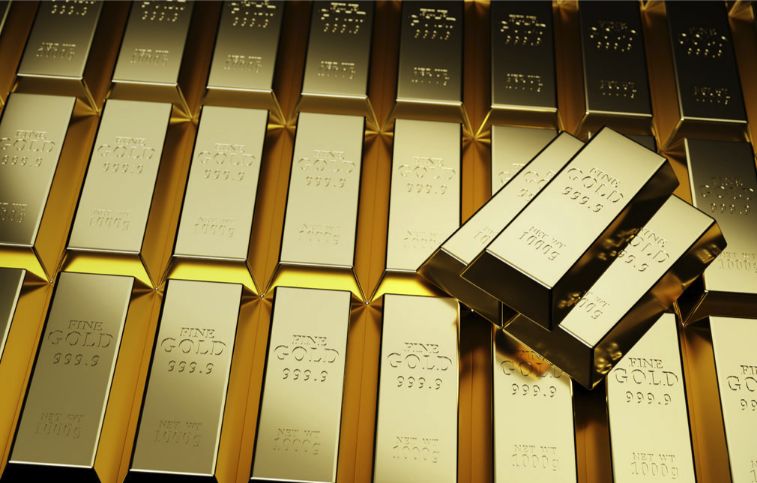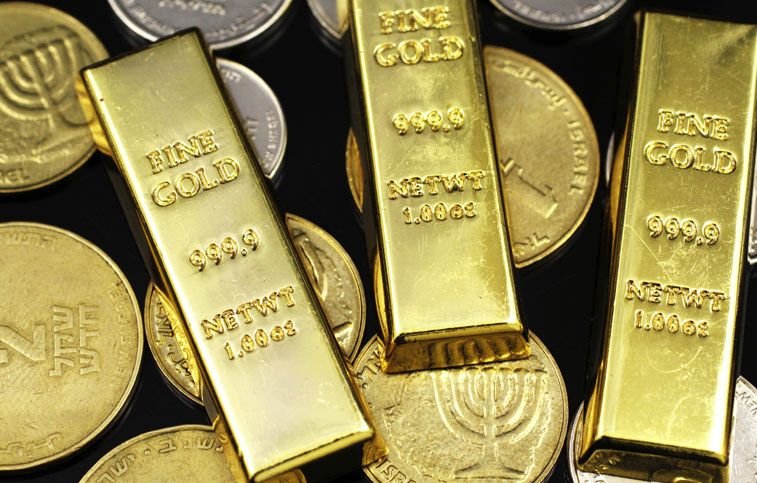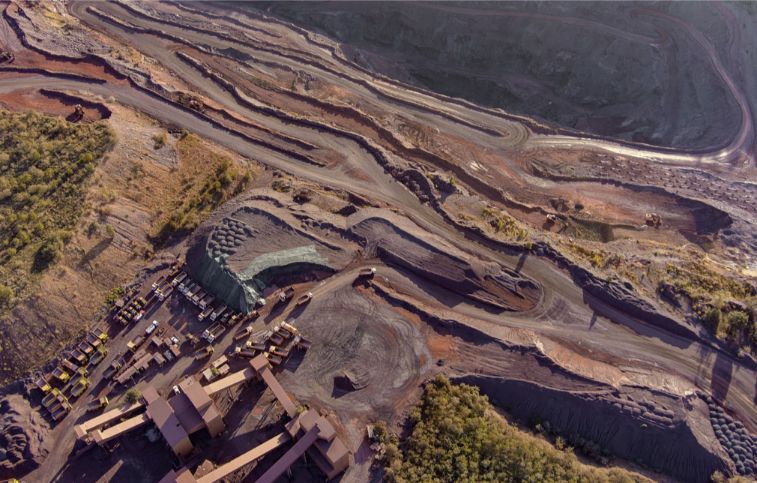What are Mining Stocks?
In times of economic and political uncertainty, many investors have historically turned to safe-haven assets such as precious metals and minerals. These materials are used in various applications, including jewelry making, industry, technology, aviation, and aerospace. Therefore, one way to gain exposure to the mining sector would be to invest in mining stocks involved in the exploration, extraction, and sale of metals and other minerals.
Russia’s invasion of Ukraine in February caused the prices of many commodities to increase. This rise happened because both countries are essential producers of steel and iron and are also important producers of fertilizer. The war is increasing mining stocks and attracting the attention of many investors who want to make their investment portfolios bigger.
According to IBIS World, mining companies in the United States contribute more than $500 billion annually to the economy. Therefore, it should be no surprise that mining stocks are among the most sought-after investments on Wall Street. Furthermore, the New York Stock Exchange (NYSE) alone has 79 precious metals mining companies, not to mention different types of miners and stock exchanges.
So, what are the common types of mining stocks, and which are the best ones on the market today? This article will provide all the essential information to address these questions and enable you to make an informed investment decision.
Types Of Mining Stocks
You can group mining stocks into the following types based on the raw materials they deal with:
Base Metals: These are common and inexpensive metals used for various industrial applications. For instance, they are essential raw materials in the construction, electrical, and technology sectors. Iron ore, lead, nickel, zinc, copper, molybdenum, aluminum, and cobalt are the most popular base metals.
Precious Minerals: These are rare natural sources with a very high monetary value. As a result, we frequently use them as jewelry or as a form of currency (silver coins and gold bars). Gold, platinum, silver, and palladium are some of the most precious metals.
Energy Materials: Miners extract these materials from the earth and burn them to generate energy. Coal is the most common material that is processed and turned into fossil fuels. Uranium is a vital nuclear power source, while bitumen (a tar-like substance mainly found in Canada) is processed into crude oil.
Minerals: These are pure chemical compounds that exist in nature. Potash, gypsum, talc, quartz, calcite, diamonds, and salt are typical examples of minerals extracted.
Building Materials: They are rocks that are used in the construction industry. Building aggregates such as limestone, stone, sand, and granite are common.
We can further distinguish mining stocks by looking at the various types of mining companies and their market capitalization:
Large Mining Corporations: These are well-capitalized firms with decades of experience in global operations and a slow but consistent cash flow. Mining stocks for these companies are usually not very volatile.
Small Mining Firms: They typically have less capital compared to the latter, a short operational history, and high expectations for massive returns in the future. Mining stocks in these companies are typically more volatile than the others.
With this information, an investor can decide which mining stocks to consider. However, it is wise to diversify your portfolio by not putting all your money into one stock or only one type of company. As the saying goes, do not put all your eggs in one basket.
The Most Popular Types of Mining Stocks
There are a large variety of metals hidden beneath the surface, but not all of them are worth mining for. Below we discuss the most popular resources and why they are important in the mining industry.
1. Gold Mining Stocks
Companies looking to find gold are among the most sought-after. The truly fascinating thing about gold is that, despite economic downturns, individuals continue to spend money on both physical gold and gold stock investments.
This popularity is mainly because gold typically appreciates regardless of how the rest of the economy is doing. Therefore, investing in these mining stocks is less likely to disappoint since gold serves as the global standard for value.
2. Platinum Mining Stocks
Every investor worth their weight in metal knows there is an order to which metals are prioritized when investing in mining stocks. Everyone should take the necessary steps to invest in gold stocks, but platinum stock investments should be noticed more frequently by potential investors. People need to understand the value of platinum, even though it is one of the most valuable metals in the world and a symbol of success.
3. Lithium Mining Stocks
By 2022, demand for lithium is expected to be higher than current production rates. Analysts predict that by 2050, lithium usage may be 170% more than the known reserves. To uncover additional lithium resources, miners must therefore intensify their exploration efforts.
To meet rising demand, mining companies must search for and build new mines to supply the lithium needed in the renewable energy sector. This increase in demand may be an ideal opportunity for potential investors to take advantage of the current market for lithium stocks.
For instance, batteries require materials like cobalt and lithium. As a result, the rapid adoption of electric vehicles and the expansion of wind and solar power plants are advantages for miners and investors of lithium. It is because battery storage, which heavily relies on lithium, will become more necessary to fill in the energy gaps created when the wind is not blowing and the sun is not shining.
4. Copper Mining Stocks
Despite having a secondary place in the mining industry, since bronze is an alloy made of copper, this metal plays a crucial role in developing electric vehicles. According to a Reuters study, the conductivity level of pure copper is second only to silver.
The introduction of hybrid and battery-powered cars has increased the amount of copper wiring needed to operate these cars.
5. Mining Stock ETFs (Exchange-traded Funds)
If you need more expertise to research mining stocks, you can invest in a mutual fund or exchange-traded fund that invests in mining companies. If you are among this group of investors, we recommend that you explore exchange-traded funds.
These funds collect investments from many investors and then use the funds to make significant investments in a diverse range of specific stocks based on the prospectus for the fund. ETFs are popular with investors because they let you easily add the types of stocks you want to your portfolio without having to research each one.
ETFs are available in many industries and investment portfolios, and mining is no exception. A quick search on your preferred search engine will show you several mining funds with the potential to deliver impressive returns.
Four Techniques for Selecting the Best Mining Stocks
Before investing in specific mining stocks and shares, potential investors should be familiar with these industry-specific financial measures companies use to gauge their growth.
1. AISC (All-in Sustaining Costs)
Gold producers use this metric to formulate the price associated with producing an ounce of gold. It accounts for all mine operating expenses, including royalties, production taxes, refining costs, and company expenses, including general, administrative, and exploration expenses. With this indicator, investors can see how much it costs the business to make one ounce of gold.
2. By-product Credits
Miners will sell their unprocessed metals to third parties who will turn them into finished goods. They will use the money from these sales to pay for the costs of mining their main product.
For example, copper deposits often have small amounts of gold, silver, molybdenum, and zinc. Miners sell these metals to make up for the cost of processing the copper.
3. Cash Costs
Also known as the actual cost of producing metals like copper or gold, this is another item that mining companies will include in their total cost of operations report. This indicator is distinct from AISC or by-product credits because it only considers mining costs.
4. EBITDA
This abbreviation stands for Earnings Before Interest, Taxes, Depreciation, and Amortization. Using this metric, companies can effectively communicate their principal profits to investors.
The Best Mining Stocks to Consider
As a result of the COVID-19 pandemic, which caused lockdowns and a labor shortage, the mining industry, like many others, encountered severe economic challenges. Fortunately, some of the best stocks in this industry could endure the setback.
The economic downturn made mining stocks more attractive to investors, and as the global economy recovers, so will the mining stocks. Below are three mining companies that have the potential to become market leaders.
1. Barrick Gold Corporation
Barrick Gold Corporation (NYSE: GOLD) is one of the world’s largest gold miners, with a market capitalization of more than $32 billion. Although the company’s headquarters are in Canada, it has mining projects in 12 countries worldwide, including Argentina, Chile, Canada, and the Dominican Republic.
The COVID-19 pandemic significantly impacted the firm since its stocks lost more than 35% of their value. Nonetheless, the stock market prices recovered, and many see this as an opportunity. After all, the company has outperformed earnings estimates for the past four quarters, with solid net income growth and earnings in 2022’s second quarter.
2. Franco Nevada Corporation
While Franco Nevada (NYSE: FNV) does not manage its mining operations, it is a significant player in the mining industry. Since its inception in 2007, the company has rapidly grown to become one of the world’s leading gold royalty and streaming firms.
It is costly to set up and operate a gold mine, and many companies need more cash to cover the costs. Franco Nevada becomes involved in this scenario by providing upfront funds to cover these expenses, but not for free. The company requires one of two things in exchange for the upfront funding:
A Royalty Contract: Royalty agreements grant the company a portion of the revenue generated by selling gold obtained at the mine. When the mine begins to produce gold, the mining company will handle the extraction and sale of the precious metal, and FNV will receive a percentage of the profits.
A Streaming Contract: Streaming agreements function similarly to royalty agreements, with one major exception. These agreements give the firm funding the mining project the right to buy a portion or all of the gold produced at the mine at a lower price. The financier can then profitably sell the gold it purchased at a relatively lower price on the open market.
Franco Nevada’s business model has proven to be successful. In less than a decade and a half, the company has grown to a nearly $26 billion market capitalization and has one of the industry’s most robust balance sheets.
3. Rio Tinto Group
Rio Tinto Group (NYSE: RIO) is very different from the two other companies on this list. Their stocks trade on the over-the-counter market (OTC), which most investors should avoid. However, unlike most OTC stocks, Rio Tinto is not a penny stock in its early stages of development. With a market cap of nearly $115 billion, it is the world’s second-largest mining company.
As one of the world’s largest companies, the firm is known for delivering appealing financial results, and its 2022 second quarter was no exception. The company generated $16 billion in revenue during the quarter, an increase of 70% year-on-year. Net income was impressive, coming in at $6 billion, representing a 271% year-over-year increase.
Of course, with such incredible growth in net income, their profits were spectacular, coming in at $3.78 per share for a growth rate of 270%. In addition, the company outperformed on all other key metrics. Net profit margin, operating income, cost of revenue, and net cash change all increased by double or triple-digit percentages.
Issues Affecting Mining Stocks
The mining industry has long served as a conventional inflation hedge in geopolitical instability, rising inflation, and high-interest rates. The sector is anticipated to expand at a CAGR of around 13% by 2026 and reach a market value of $3.35 trillion.
Although these figures appear encouraging, the mining industry nevertheless faces several difficulties. In 2022, the mining industry will need to deal with some risks, including supply chain challenges, ESG requirements, political uncertainty, and trade wars between countries.
Final Thoughts on Mining Stocks
The mining sector is among the fastest-growing industries in the world, and this trend is expected to continue. Without miners, the resources needed to build high-rise buildings, manufacture and maintain electric automobiles, or even make jewelry would be practically impossible.
However, as with any other industry, it is essential to do extensive research before investing in mining stocks. After all, no two businesses are created equally, and no two companies possess the same market valuation.
You can head over to our profiles section where we discuss all the major mining companies in depth. Alternatively, you can also visit the news section to keep yourself updated with all the latest developments in the mining industry.












